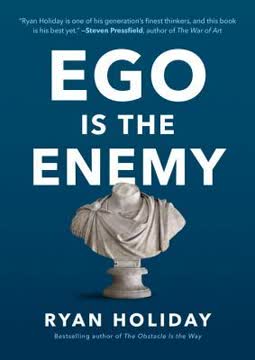Key Takeaways
1. Master the Art of Insinuation to Bypass Resistance
"Insinuation lets you bypass people's natural resistance, for they seem to be listening only to what has originated in themselves."
Subtle suggestion is powerful. Insinuation allows you to plant ideas in people's minds without triggering their defenses. By making suggestions indirectly, you allow the target to believe the ideas are their own, making them more receptive. This technique involves:
- Dropping subtle hints during casual conversation
- Using ambiguous language that can be interpreted multiple ways
- Making "accidental" remarks or gestures that convey hidden meanings
- Letting silence and pauses speak volumes
Timing is crucial. The most effective insinuations are made when the target is relaxed or distracted. Social gatherings, friendly banter, and shared activities provide ideal opportunities to slip in suggestive comments unnoticed.
2. Create a Need by Stirring Anxiety and Discontent
"Anxiety, a feeling of lack and need, is the precursor of all desire."
Exploit inner emptiness. Most people have underlying insecurities and unfulfilled desires. By subtly reminding targets of what they lack or stirring up anxiety about their current situation, you create a need that you can then fill. Techniques include:
- Hinting at missed opportunities or unfulfilled potential
- Comparing the target unfavorably to others
- Reminding them of past ideals they've abandoned
- Suggesting their current life lacks excitement or meaning
Offer the solution. Once you've awakened discontent, position yourself as the answer to their newly realized needs. This makes the target see you as their savior, eagerly embracing what you have to offer.
3. Appear as an Object of Desire to Increase Your Value
"We want what other people want."
Create an aura of desirability. People are naturally drawn to what others find attractive. By appearing popular and sought-after, you increase your perceived value and become more alluring. Strategies include:
- Surrounding yourself with admirers
- Hinting at past conquests or relationships
- Creating competition or triangles of desire
- Maintaining an air of mystery and inaccessibility
Leverage social proof. When others seem to desire you, it triggers a competitive instinct in your target. They'll want to possess what others covet, making your seduction easier.
4. Send Mixed Signals to Create Intrigue and Fascination
"A mix of qualities suggests depth, which fascinates even as it confuses."
Be a paradox. Humans are drawn to what they can't easily categorize. By displaying seemingly contradictory qualities, you become an intriguing puzzle that others want to solve. Examples:
- Combine toughness with tenderness
- Mix innocence with sensuality
- Balance intellect with spontaneity
- Alternate between warm engagement and cool distance
Keep them guessing. The key is to never be fully predictable. Just when your target thinks they've figured you out, reveal a new facet of your personality that surprises them.
5. Choose the Right Victim for Successful Seduction
"The perfect victim has some natural quality that attracts you."
Target selection is crucial. Not everyone is equally susceptible to seduction. Look for individuals who:
- Are going through a transitional or vulnerable period in life
- Have unfulfilled needs or desires you can exploit
- Possess qualities that genuinely intrigue or attract you
- Show signs of boredom or dissatisfaction with their current situation
Avoid the wrong targets. Steer clear of those who are:
- Too content or self-satisfied
- Overly cynical or jaded
- Emotionally unavailable or closed off
Remember, your genuine interest in the target will fuel your seductive efforts, making them more convincing and effective.
6. Create a False Sense of Security Through Indirect Approach
"At first there must be nothing of the seducer in your manner."
Disarm through friendship. Approach your target indirectly by first establishing a non-threatening relationship. This lowers their defenses and allows you to gather valuable information about their desires and vulnerabilities. Tactics include:
- Presenting yourself as a friend or confidant
- Showing genuine interest in their life and thoughts
- Offering support or assistance without expectation
- Gradually increasing intimacy through shared experiences
Patience is key. Allow the relationship to develop naturally, never rushing or pushing for more than the target is ready to give. This builds trust and makes your eventual seduction seem like a natural progression rather than a premeditated plan.
7. Enter Their Spirit to Lower Defenses and Gain Trust
"Play by their rules, enjoy what they enjoy, adapt yourself to their moods."
Become their mirror. People are naturally narcissistic and are drawn to those who reflect their own qualities. By adapting to your target's personality, interests, and values, you create a powerful connection. This involves:
- Mimicking their communication style and body language
- Sharing their enthusiasms and participating in their hobbies
- Validating their worldview and opinions
- Adapting to their emotional state and energy level
Gradual influence. Once you've fully entered their spirit and gained their trust, you can begin to subtly shape their thoughts and desires. This allows you to lead them into your seduction without them feeling manipulated or pressured.
Last updated:
FAQ
What's The Art of Seduction by Robert Greene about?
- Exploration of Seduction: The book delves into the psychology of seduction, presenting it as a powerful form of influence and control. It synthesizes historical examples and literary references to illustrate timeless strategies.
- Character Archetypes: Greene identifies ten archetypal seducers, such as the Siren and the Rake, each embodying different seductive qualities. These serve as models for understanding attraction and manipulation.
- Seductive Maneuvers: The book outlines twenty-four specific maneuvers for seducing others, emphasizing patience, strategy, and emotional manipulation.
Why should I read The Art of Seduction by Robert Greene?
- Understanding Human Nature: The book provides insights into human desires and motivations, revealing how seduction operates on both conscious and unconscious levels.
- Practical Strategies: Greene offers advice applicable in various social situations, enhancing persuasive abilities and social skills in both romantic and professional contexts.
- Historical Context: Rich with historical anecdotes, the book connects timeless principles of seduction to contemporary life, making it relevant for modern readers.
What are the key takeaways of The Art of Seduction by Robert Greene?
- Power of Seduction: Seduction is portrayed as a subtle and effective form of power that can be wielded by anyone to gain influence in relationships.
- Emotional Manipulation: Creating feelings of desire, insecurity, and excitement is crucial for successful seduction, with an emphasis on insinuation and suspense.
- Self-Awareness: Greene stresses the need for self-awareness, encouraging readers to identify their seductive qualities and adapt their approach based on the target's desires.
What are the best quotes from The Art of Seduction by Robert Greene and what do they mean?
- "Seduction is the most subtle, elusive, and effective form of power.": This quote suggests that seduction operates beneath overt power dynamics, allowing influence without force.
- "The ability to delay satisfaction is the ultimate art of seduction.": It highlights the Coquette's strategy of creating desire through absence, intensifying longing.
- "Charm is seduction without sex.": Greene distinguishes charm from sexual seduction, indicating its effectiveness in creating attraction in social and professional contexts.
How does Robert Greene define seduction in The Art of Seduction?
- Seduction as Power: Greene defines it as a subtle, indirect form of power, contrasting with overt control, to achieve desires without confrontation.
- Psychological Manipulation: Seduction involves playing on emotions and desires through charm, attention, and emotional resonance.
- Art and Strategy: It is presented as both an art and a strategy, requiring careful planning and execution, akin to a game mastered with practice.
What are the different types of seducers described in The Art of Seduction by Robert Greene?
- The Siren: Uses allure and sensuality to captivate, embodying femininity and mystery.
- The Rake: Characterized by intense passion and desire, creating excitement and danger.
- The Coquette: Plays hard to get, using warmth and aloofness to heighten desire.
What are the phases of seduction outlined in The Art of Seduction by Robert Greene?
- Phase One: Create Temptation: Awaken desire by hinting at pleasures to come, stimulating curiosity.
- Phase Two: Lead Astray: Keep the target emotionally engaged and confused, creating unpredictability.
- Phase Three: The Precipice: Deepen emotional connection through extreme measures, solidifying the bond.
How can I apply the concepts from The Art of Seduction by Robert Greene in my life?
- Self-Reflection: Identify and enhance your seductive qualities to navigate social interactions effectively.
- Practice Emotional Manipulation: Use strategies to create emotional responses, making others feel special or desired.
- Adapt to Your Audience: Tailor your approach based on individual needs and desires, adjusting behavior to resonate.
What role does absence play in the strategies outlined in The Art of Seduction by Robert Greene?
- Creating Tension: Absence creates tension and longing, making the target yearn for the seducer's return.
- Psychological Manipulation: Induces insecurity and anxiety, prompting the target to pursue more aggressively.
- Reinforcing Desire: Absence reinforces desirability, leading to a more intense emotional connection upon reunion.
How does The Art of Seduction by Robert Greene address the concept of emotional highs and lows?
- Emotional Rollercoaster: Creating highs and lows keeps the target engaged and invested in the relationship.
- Intensity of Experience: Fluctuations intensify the experience, making the climax more rewarding.
- Dependency Creation: Alternating pleasure and pain fosters dependency, strengthening the bond.
What are some common pitfalls to avoid in seduction as outlined in The Art of Seduction by Robert Greene?
- Overexposure: Avoid becoming too familiar or predictable, maintaining mystery and intrigue.
- Neglecting Emotional Dynamics: Manage emotional highs and lows to maintain intensity in the relationship.
- Being Too Nice: Avoid being overly accommodating, as boldness and assertiveness are key to seduction.
How can one maintain the seductive atmosphere after the initial seduction according to The Art of Seduction by Robert Greene?
- Continuous Re-seduction: Introduce new experiences and surprises to prevent familiarity from dulling the relationship.
- Injecting Drama: Create tension or conflict to reignite the initial spark and keep the relationship dynamic.
- Avoiding Complacency: Engage the target's emotions and desires continually to preserve and enhance the seductive atmosphere.
Review Summary
The Art of Seduction receives mixed reviews, with some praising its historical anecdotes and psychological insights, while others criticize its manipulative tactics. Readers appreciate the book's comprehensive analysis of seduction techniques and their applications beyond romantic relationships. Many find it entertaining and thought-provoking, citing its usefulness in understanding human behavior. However, critics argue that the book promotes unethical manipulation and objectification. Some readers struggle with the book's length and repetitive content, while others consider it a valuable resource for personal growth and social dynamics.
Similar Books










Download PDF
Download EPUB
.epub digital book format is ideal for reading ebooks on phones, tablets, and e-readers.













